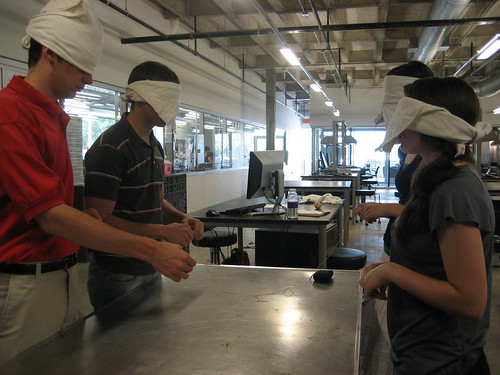Today, we started out with an exercise to practice our communication skills. We split into partners, and sat with our backs to each other. We took turns being the leader and the follower. The follower held an untied shoe in his/her hands, and the leader would give details directions as to how to tie the shoe. The follower was not allowed to do any action that the leader did not tell him/her to do. From this exercise, we realized how difficult an everyday action can be when you try to put it into just words. A common mistake was the leader assuming the follower would perform certain actions without being told, such as pulling the shoelaces taut. We also noticed how the followers learned from the leaders mistakes, and added in the details when it was their turn to be the leaders. This exercise reminded us of how important little details can be and how we can always learn from each other.
The rest of the day was just spent in doing background research on our project. First, we discussed all the topics we needed to learn about, ranging from current technologies and materials (both in art and storage) to history of art conservation. Then we divided up the work and flipped through both books and websites, occasionally checking up on each other and discussing what we’ve found. Our conclusion: there is currently nothing that does what we want to achieve, but we can look at travel frames/cases and art storage to gain an idea of the sort of design we want to combine both aspects of preventive conservation. All in all, it was a rewarding day.



